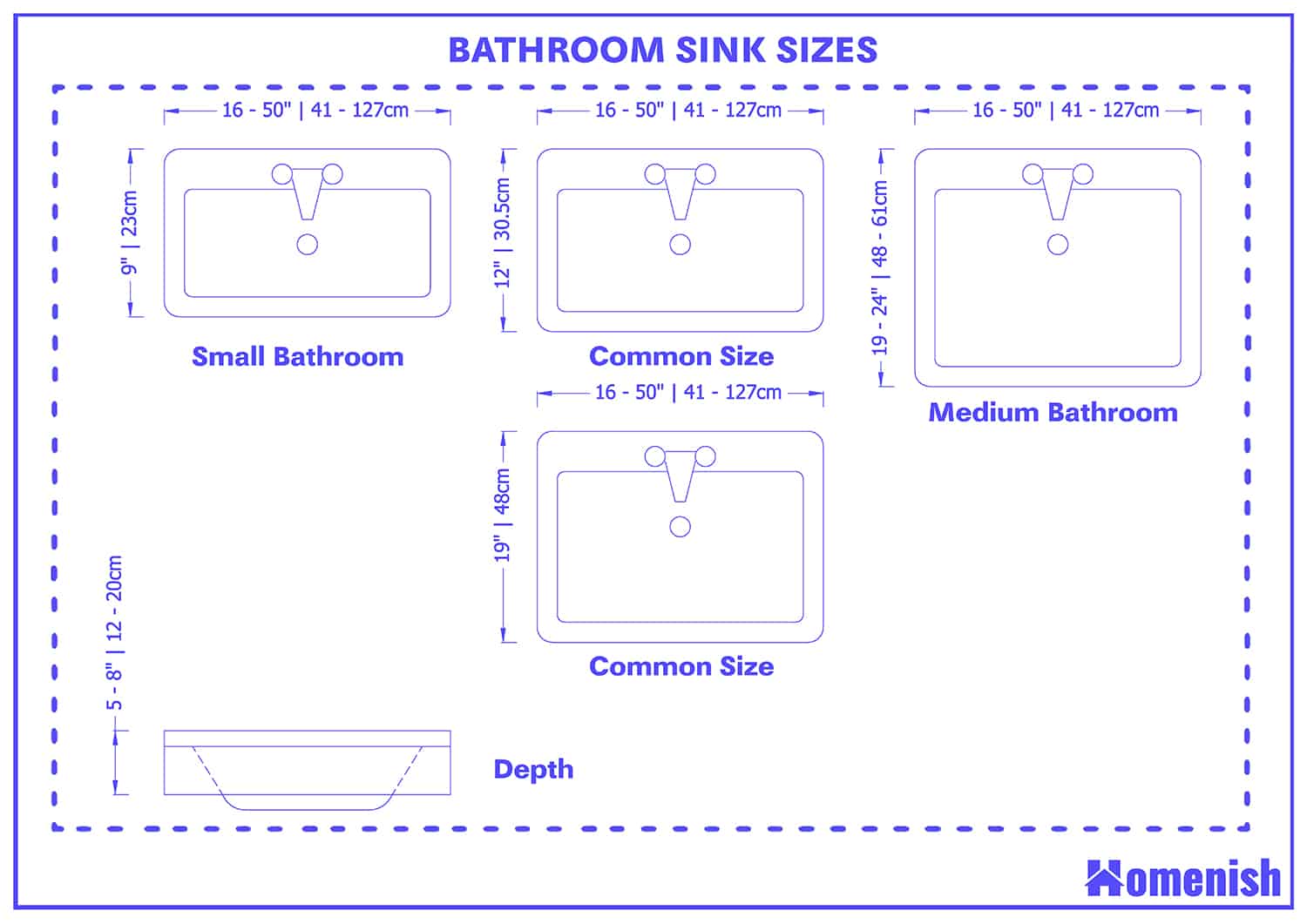Understanding Standard Bathroom Vanity Depth

A bathroom vanity’s depth is a crucial consideration, impacting both functionality and aesthetics. While standard depths exist, choosing the right one for your space requires understanding the factors at play.
Factors Influencing Vanity Depth Selection
The ideal vanity depth is determined by several factors, ensuring a balanced blend of functionality and visual appeal within your bathroom.
- Bathroom Size: A smaller bathroom might necessitate a shallower vanity to maximize floor space, while larger bathrooms offer more flexibility in choosing a deeper vanity.
- Layout: The bathroom’s layout and the positioning of other fixtures, like the toilet and shower, influence the vanity’s depth. A narrow bathroom might benefit from a vanity with a shallower depth to allow for comfortable movement.
- Intended Use: The vanity’s intended use, such as storing toiletries, towels, or makeup, influences the required depth. A vanity intended for storing larger items like towels or cleaning supplies would likely require a deeper depth.
Practical Tips for Choosing the Right Vanity Depth
Choosing the appropriate vanity depth is essential for a functional and aesthetically pleasing bathroom. Here are some practical tips to guide your decision:
- Consider the Sink’s Size: A larger sink often necessitates a deeper vanity to accommodate its size and provide sufficient counter space.
- Allow for Sufficient Walkway Space: Ensure enough space to comfortably move around the vanity. A minimum of 30 inches of walkway space is generally recommended.
- Assess Storage Needs: Determine the amount of storage space required for your toiletries, towels, and other items. A deeper vanity provides more storage capacity, while a shallower vanity might be sufficient for smaller bathrooms with limited storage needs.
Common Vanity Depths and Their Applications
The depth of a bathroom vanity significantly influences its functionality, storage capacity, and visual appeal. Selecting the appropriate vanity depth is crucial to ensure both practicality and aesthetics in your bathroom. Understanding the different standard vanity depths and their corresponding applications can guide you in making an informed decision.
Standard Vanity Depths and Their Applications
The following table Artikels the common standard bathroom vanity depths and their typical applications:
| Vanity Depth | Application |
|---|---|
| 18 inches | Small bathrooms, powder rooms |
| 21 inches | Standard bathrooms, medium-sized bathrooms |
| 24 inches | Large bathrooms, master bathrooms |
Advantages and Disadvantages of Different Vanity Depths
Different vanity depths offer unique advantages and disadvantages in terms of storage space, accessibility, and overall aesthetics.
| Vanity Depth | Advantages | Disadvantages |
|---|---|---|
| 18 inches |
|
|
| 21 inches |
|
|
| 24 inches |
|
|
Impact of Vanity Depth on Functionality and Aesthetics, Standard bathroom vanity depth
The choice of vanity depth directly impacts the functionality and visual appeal of a bathroom.
A deeper vanity generally provides more storage space, but it can also make the bathroom feel smaller. A shallower vanity may offer less storage but can create a more open and spacious feel.
For instance, a 24-inch deep vanity in a small bathroom can create a cramped and cluttered look. However, the same vanity depth in a large bathroom can offer ample storage and a luxurious feel. Conversely, an 18-inch deep vanity in a large bathroom might appear too small and inadequate for the space.
Ultimately, the ideal vanity depth depends on the size and layout of the bathroom, the desired storage capacity, and personal preferences. Careful consideration of these factors can ensure a bathroom that is both functional and aesthetically pleasing.
Beyond Standard Depths: Standard Bathroom Vanity Depth
The standard bathroom vanity depths might not always be suitable for every bathroom. For those seeking a vanity that perfectly complements their space and needs, custom vanity depths offer a solution. Custom vanity depths allow for tailored designs that optimize storage, functionality, and aesthetics, enhancing the overall bathroom experience.
Custom Vanity Depth Considerations
Customizing a vanity depth necessitates careful consideration of various factors to ensure a successful outcome.
- Available Space: The first and foremost consideration is the available space within the bathroom. Accurately measuring the available area is crucial to determine the maximum possible depth for the vanity. This includes factoring in the space required for doors to open, the location of plumbing fixtures, and the proximity to other bathroom elements. A detailed floor plan with precise measurements is essential to guide the design process.
- Plumbing Access: The location of plumbing fixtures, such as the drain and water supply lines, plays a vital role in determining the vanity’s depth. It is essential to ensure that the vanity’s depth allows for easy access to plumbing for maintenance or repairs. In some cases, adjusting the plumbing configuration may be necessary to accommodate a custom depth. Consulting a plumber during the design phase is recommended to ensure that the vanity’s depth does not compromise plumbing access.
- Storage Requirements: The desired level of storage is a crucial factor in deciding the vanity’s depth. A deeper vanity provides more storage space for toiletries, towels, and other bathroom essentials. However, excessive depth can make the bathroom feel cramped, especially in smaller spaces. A balance must be struck between ample storage and a comfortable bathroom environment. The layout and configuration of drawers, shelves, and cabinets within the vanity also impact storage capacity.
- Personal Preferences: Ultimately, personal preferences play a significant role in determining the ideal vanity depth. Some individuals prioritize a spacious vanity with ample storage, while others prefer a slimmer design to maximize floor space. Consider the bathroom’s overall style and the desired level of functionality to guide the choice of depth.
